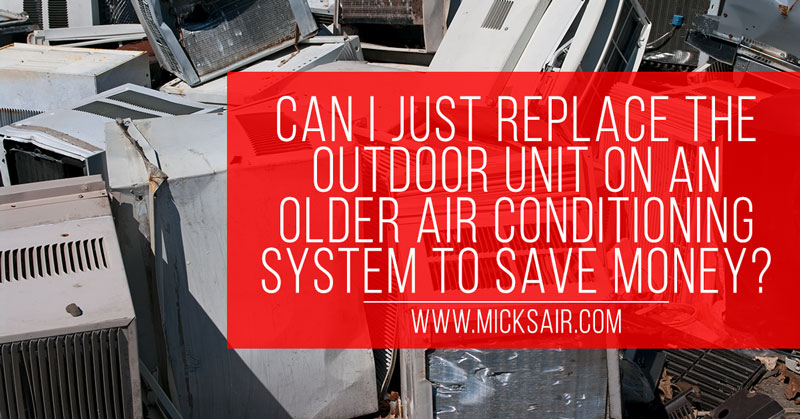Central air conditioners have separate units that sit both inside and outside your home. The indoor unit in your AC contains a component called the evaporator coil, while the outdoor unit contains two components: the compressor and the condenser coil. If you have an older central air conditioner, either of the components in the outdoor unit may fail before the evaporator in the indoor unit. In this situation, you may be tempted to replace the outdoor unit, but not the evaporator. Unfortunately, since the technology in new air conditioners doesn’t match the technology used in older ACs, this approach can cause significant problems both now and in the future.
Air Conditioner Basics
The central air conditioner in your home pulls heat from the indoor air through a return duct that leads to the evaporator coil. Inside this coil, the heat gets transferred to a refrigerant gas. Next, the gas travels to the outdoor part of your AC, where it enters the compressor, gets pressurized and grows hotter. From the compressor, the hot gas moves to the condenser. Inside this component, the heat dissipates and the gas turns into a liquid. The refrigerant liquid then returns to the evaporator coil, where a blower fan circulates much cooler air through your ducts. The liquid evaporates and turns back into a gas, and the cycle starts again.
Why Must Your AC Components Match?
The components in your central air conditioner work together in order to pull heat from inside your house and circulate cooler air. If one of these components doesn’t do its job, the system won’t function properly. You might logically assume that the simple replacement of a malfunctioning compressor or condenser would return your AC to working order. However, in order to perform their job, the components in your central air conditioner must also use matching or compatible technologies. Modern components use new technology designed to increase their efficiency. Older components don’t share this technology and operate at a much lower efficiency level.
If you only install a new compressor or condenser in your older AC system, the technology used in these modern components won’t match with the technology used in your evaporator. One consequence of this mismatch is reduced cooling efficiency, which in turn leads to higher indoor temperatures. A mismatch between a new outdoor unit and an older indoor unit can also lead to component failure and the need to spend even more money repairing your air conditioner.
Replace Both Indoor and Outdoor Units
The key to avoiding mismatched air conditioner components is replacing both the indoor and outdoor unit of an older system, even when the indoor unit still functions. While your replacement costs will be higher, you’ll save yourself from even greater expense in the future and preserve your household comfort. Make sure to follow our blog for additional advice on how to maximize your AC performance.

